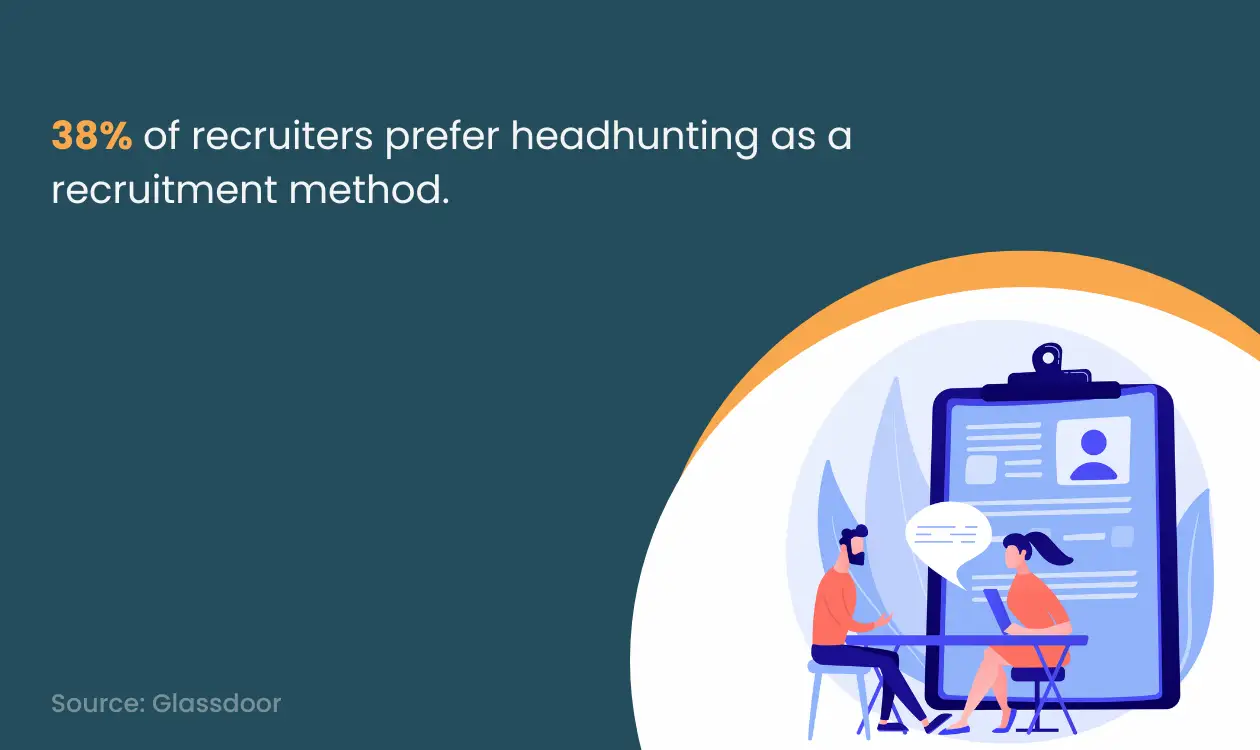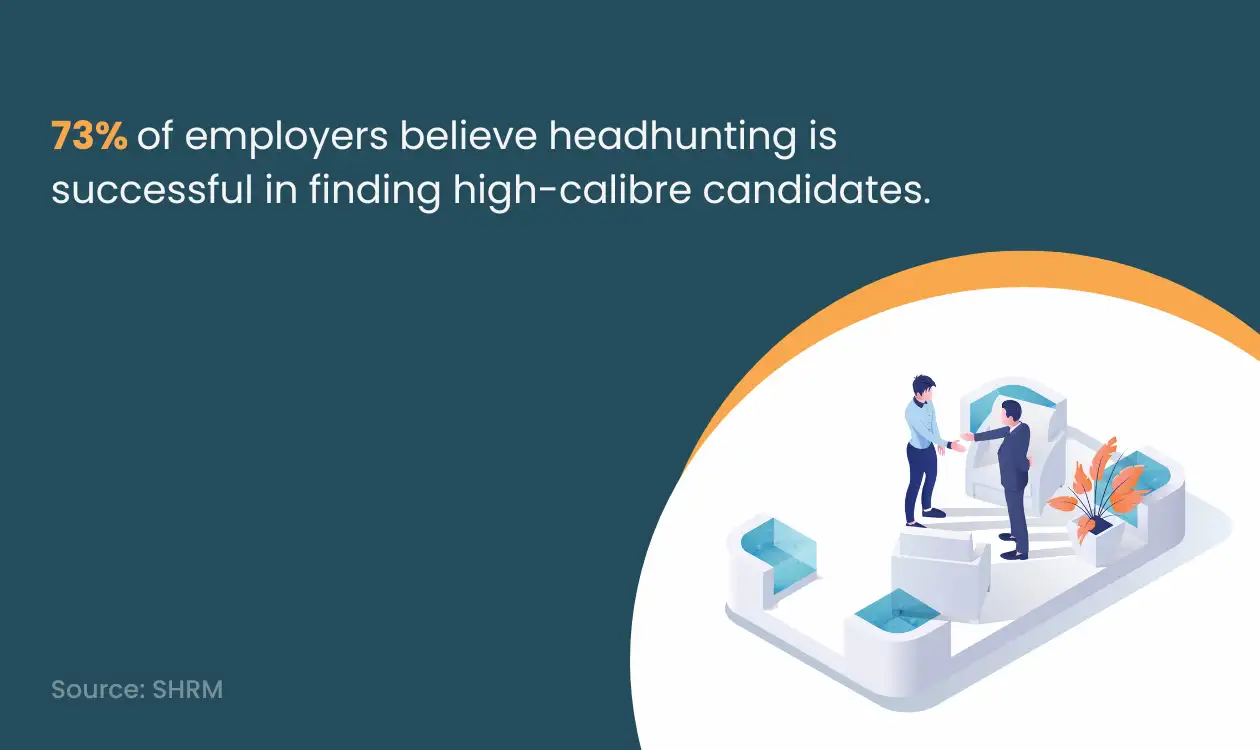TL;DR
- Headhunting targets specialised or senior-level talent not actively seeking jobs, offering a targeted, cost-effective approach.
- Recruitment casts a wider net, sourcing active job seekers for general roles, usually faster and suitable for filling multiple positions.
- Both methods involve candidate research, screening, and selection but differ in scope, process, and cost models.
- Headhunting typically uses fee-based or contingency arrangements, while recruitment may be salaried or commission-based.
- Combining both strategies can optimise hiring by leveraging their respective strengths based on organisational needs.
Hiring the right talent can be a game-changer for any organisation. But with today’s job market becoming increasingly competitive, choosing the most suitable approach can feel overwhelming. Should you cast a wide net with traditional recruitment or pursue specific professionals through headhunting?
Two of the most common strategies are headhunting and recruitment. Each offers unique advantages and is suited to different circumstances. While they might seem similar at a glance, these methods involve distinct techniques and target different types of candidates. Understanding the contrast between the two can save valuable time, reduce hiring costs, and ensure you make the best choice for your business.
Let’s explore the key distinctions to help you choose the right path.
What is Headhunting?
Headhunting is a recruitment process where organisations search for and contact potential candidates directly rather than relying on job postings or applications. Headhunting fills higher-level positions in an organisation, such as senior executive roles or specialised functions requiring specific qualifications. The headhunting process often involves in-depth research into potential candidates, such as detailed interviews and reference checks.
Headhunters utilise the best executive search software to efficiently conduct the end-to-end headhunting process.
Benefits of Headhunting
The main benefit of headhunting is that it enables companies to find and recruit highly skilled individuals who may not be actively seeking a career change. This can be especially beneficial for companies that need to fill a specific role that requires specialised skills or expertise, as headhunting can help access a pool of passive talent that may not be available through traditional recruitment methods.
Additionally, headhunting can be more cost-effective than other recruitment methods, as the headhunting process is often quicker and more targeted.
What is Recruitment?
Recruitment is the sourcing, screening, and selection of qualified candidates to fill job openings within an organisation. It involves creating and advertising job listings, screening candidates, conducting interviews, and selecting the most qualified person for the position. Recruitment also includes onboarding and orienting new employees, as well as managing the employee-employer relationship throughout their employment.
Benefits of Recruitment
The benefits of recruitment include:
1. Accessibility to more qualified candidates
2. Ability to make more informed hiring decisions
3. Cost savings due to reduced time spent on the recruitment process
4. Increased employee retention
5. Improved diversity in the workplace
6. Enhanced employer brand and employer reputation
Similarities Between Headhunting and Recruitment
Headhunting and recruitment involve searching for and securing qualified candidates for a job opening. They include researching potential candidates, screening resumes, contacting potential candidates, and facilitating interviews.
Both headhunting and recruitment require a thorough understanding of the job opening, the organisation's needs, and the skills and qualifications necessary for the job. Additionally, both methods are designed to ensure a successful hire who is a good fit for the position and the company.
Differences Between Headhunting and Recruitment
The main difference between headhunting and recruitment is the scope of the search. Headhunting is a more targeted approach that focuses on a specific job opening and utilises a narrower search to find the right candidate. On the other hand, recruitment involves a more comprehensive and expansive search, allowing more candidates to be considered.
Additionally, headhunting is usually done on a fee-based or contingency basis, while recruitment is generally done on a salary or commission basis. Lastly, headhunters are typically individuals or firms, while recruiters generally are internal staff members or third-party agencies.
When to Use Headhunting vs Recruitment
Headhunting is best when you’re looking for specialised or senior-level talent—people who might not be actively applying for jobs but have the exact skills and experience your company needs. It’s more targeted and often used for executive roles or niche positions where the right candidate is hard to find.
On the other hand, traditional recruitment works well for filling general roles or positions where a larger pool of candidates is available. If you need to fill multiple roles quickly, or if the position doesn’t require highly specialised skills, recruitment is typically the faster and more cost-effective option.
Sometimes, combining both methods can be beneficial. You might use headhunting to find key leaders while using recruitment to build out larger teams. Knowing when to use each approach can save time and help you land the right talent for your organisation.
The key difference between headhunting and recruitment is that headhunters are highly dependent upon passive candidates who are not actively looking for a job, while recruiters focus on active job seekers.
Headhunting vs Recruitment: Key Stats
Headhunting vs recruitment is a standard topic often discussed in the recruitment industry. The following are some relevant statistics on the two methods of hiring:
1. A survey conducted by Gallup in 2022 found that 81% of employers prefer to use headhunting instead of traditional recruitment methods.
2. A study conducted by LinkedIn found that headhunted candidates are more likely to be successful in their roles and stay in their jobs longer.
3. A British Chamber of Commerce survey found that 82% of employers who use headhunting methods find their ideal candidate within two months.

For an in-depth exploration, check out our comprehensive guide on headhunting, which covers everything you need to know.
Final Thought on Headhunting and Recruitment
Here you have to learn the difference between these two, and you can choose one of them according to your needs.
Both methods have their place in the hiring landscape, and the choice between them depends on the specific needs of the role and the organisation.
Whether you opt for a recruiter to cast a wide net or a headhunter to target specific talent, knowing the strengths of each approach will help you make the best decision for your hiring needs.
Ultimately, the goal is to find the right candidate for the job, and both recruitment and headhunting offer valuable tools to achieve that.
By leveraging the right strategy, you can ensure that your organisation attracts and retains the best talent available. The best news for you is that whatever process you choose, you can conduct that process hassle-free. But how? with magic software.
If you want to conduct Recruitment, you can use our Recruitment software, and if you want to hire exclusive executives, then you can use our Executive search software. On both ways, you are in benefit. So, what are you waiting for? Get free demos of this software according to your needs for hiring.
FAQs - Frequently Asked Questions (FAQs)
1. What is the main difference between headhunting and recruitment?
Headhunting involves proactively targeting specific individuals who are not actively seeking a job or a role. Recruitment typically involves advertising a vacancy and attracting candidates who are actively seeking employment.
2. How does technology support modern headhunting?
Tools like AI-powered executive search software, talent mapping platforms, and automation in outreach help headhunters identify and engage candidates more efficiently.
3. Do recruiters and headhunters use the same candidate sourcing methods?
No. Recruiters often rely on job boards, CV databases, or applicants, whereas headhunters research and approach specific individuals, often using industry contacts and networking.
4. How can iSmartRecruit help with both headhunting and recruitment?
iSmartRecruit offers tailored tools for each approach, including executive search features, passive candidate engagement, applicant tracking, automation, and real-time analytics.
5. When should a company choose headhunting over traditional recruitment?
Headhunting is ideal when filling senior-level, niche, or highly specialised roles where qualified candidates are unlikely to be actively job-seeking. Traditional recruitment works best for roles with a broader talent pool and higher applicant volume.














